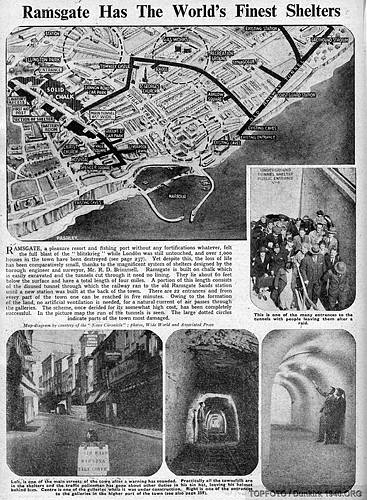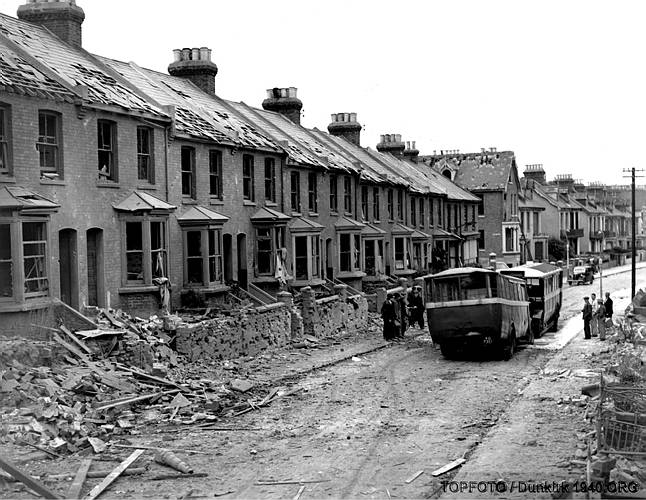This was a day of intense air activity over the south coast with German raiders targeting RAF airfields and ports and harbours. On this occasion, not only was nearby RAF Manston attacked, but simultaneously the town of Ramsgate was also targeted during the mid-afternoon. This appears to be the first occasion during the Battle of Britain that a predominantly civilian target was attacked.

It is estimated that over five hundred high-explosive bombs fell on Ramsgate in less than half an hour. The east side of the town was particularly hard hit with the gas works being devastated and very serious damage being done in the areas of Camden Square and Margate Road / Woodford Avenue, close by the railway viaduct.

The mayor, Alderman A.B.C. Kempe, was standing outside the council offices overlooking the harbour when the first bombs fell and was blown down the entrance passage into the basement. Auxiliary firemen attempting to put out the resulting fires were subjected to machine gun fire from the raiders.

There were 78 houses totally destroyed and 1,200 other properties damaged in the raid. Twenty-nine civilians and two soldiers lost their lives, with a further fifty-nine injured. In retrospect and given the severity of the raid, the casualties were surprisingly light. This was due in large part to the comprehensive system of air-raid shelters that had been constructed by the town council and which had been the brainchild of the aforementioned mayor of Ramsgate, Alderman Kempe.
To find out more about German bombs, click here.
To view the German target maps and briefing notes for the raid, click here.
To view a Pathe film of the aftermath of the raid, click here.
To read about the Ramsgate Deep Level Shelter complex, click here.
To view an example of Form No C.1 to claim damages for air-raid damge (1941 and not available at the time of the Ramsgate raid), click here.
Back
